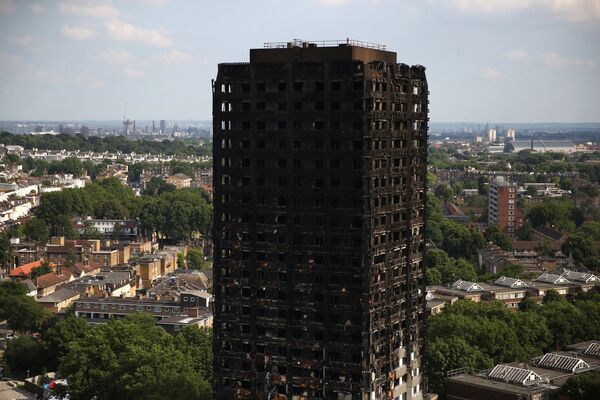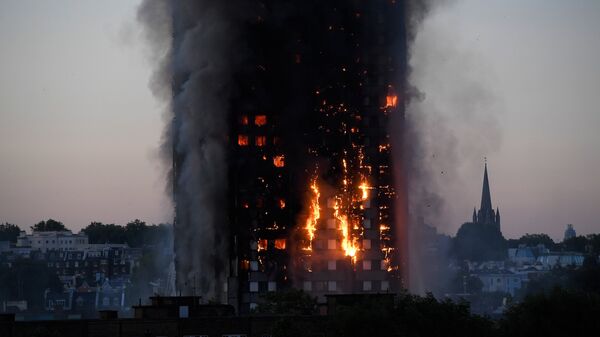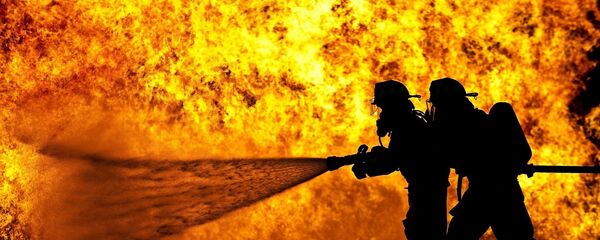The authorities in Scotland, Wales and Northern Ireland are also assessing their tower blocks to discover if any of them have been fitted with the cladding.
By Friday (June 23) morning 11 tower blocks in Plymouth, Manchester and Camden in London had been identified as definitely having the same cladding and the panels have begun to be removed.
Brian Stevens, 70, who lives in one of the tower blocks on the Mount Wise estate in Plymouth said:
"We are really peeved at the risk we have been put in. The cladding in this building went up 16 years ago and we had no idea it was unsafe."
Fears have also been raised about insulation boards which were fitted next to the cladding.
They were made of Polyisocyanurate (PIR), a type of rigid plastic foam, and Richard Hull, a professor chemistry at the University of Central Lancashire, said they could have given off clouds of cyanide as they burned.
Several of those who were treated after the Grenfell Tower were reportedly given Cyanokit, a hydrogen cyanide antidote.
LIVE: Detective Ch Superintendent Fiona McCormack provides statement on the investigation into #GrenfellTower fire https://t.co/du4ff7CQHZ
— Metropolitan Police (@metpoliceuk) 23 June 2017
He co-authored a study in 2011 into the toxicity of insulation materials and warned that PIR was the most hazardous.
"It's been an accident waiting to happen and unfortunately we've got to the stage now where the accident has happened and we're standing here saying 'I told you so,' " Professor Hull said.
Both the cladding and the insulation tiles are believed to have been put in during last year's refurbishment, which was carried out by the Rydon Group and was commissioned by KCTMO, an arm of Kensington Council.
Rydon's chief executive Bob Bond has reportedly gone into hiding since the fire. He led a management buyout of the company in 2011 and was described in an industry journal profile at the same as a "safe pair of hands."
Watch Hotpoint now be made scapegoat to deflect from the shortcomings of planners, builders, safety officers and politicians!
— Dame Alun Roberts (@ciabaudo) 23 June 2017
The Metropolitan Police confirmed on Friday the cause of the fire was a faulty Hotpoint fridge-freezer but they said it had not been the subject of any product recall.
Detective Superintendent Fiona McCormack said: "We now have expert evidence that the fire was not started deliberately — the fire started in a fridge freezer — the make and model is a Hotpoint FF175BP.
"We are working with the Department for Business, Energy and Industrial Strategy who are talking to the manufacturer of the fridge freezer. We have been told the speed it spread at was unexpected, so importantly we will establish why this happened. This investigation will be exhaustive and, as we learn more, the scope and scale may well grow. We will examine the construction of the building including the refurbishment. Whilst of course we are examining, with experts, the aluminium panelling we are also looking at the entire exterior of the building."
This is the make and model of fridge-freezer that sparked the Grenfell Tower fire. A Hotpoint FF175BP that has no history of fire issues. pic.twitter.com/PKqFz7PvEe
— Richard Suchet (@RichSuchet) June 23, 2017
"What that means is the aluminium composite tiles, the insulation behind it, how the tiles were fixed to the building as well as how it was installed. Our tests will look at each aspect individually as well as how they how all worked together as part of the building's cladding," Detective Superintendent Fiona McCormack said.

"Preliminary tests show the insulation samples collected from Grenfell Tower combusted soon after the test started.
"The initial tests on equivalent aluminium composite tiles failed the safety tests.
"Such are the safety concerns with the outcome of these tests we have immediately shared the data with the Department for Communities and Local Government who are already sharing that information with local councils throughout the country," she concluded.





